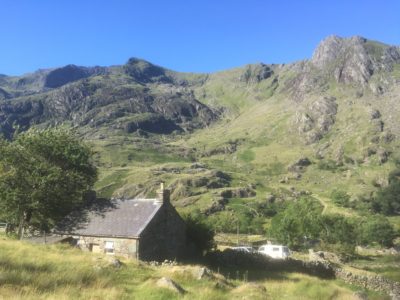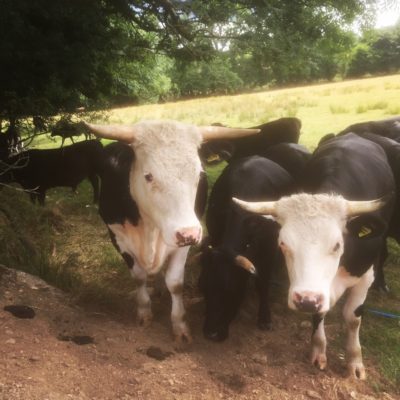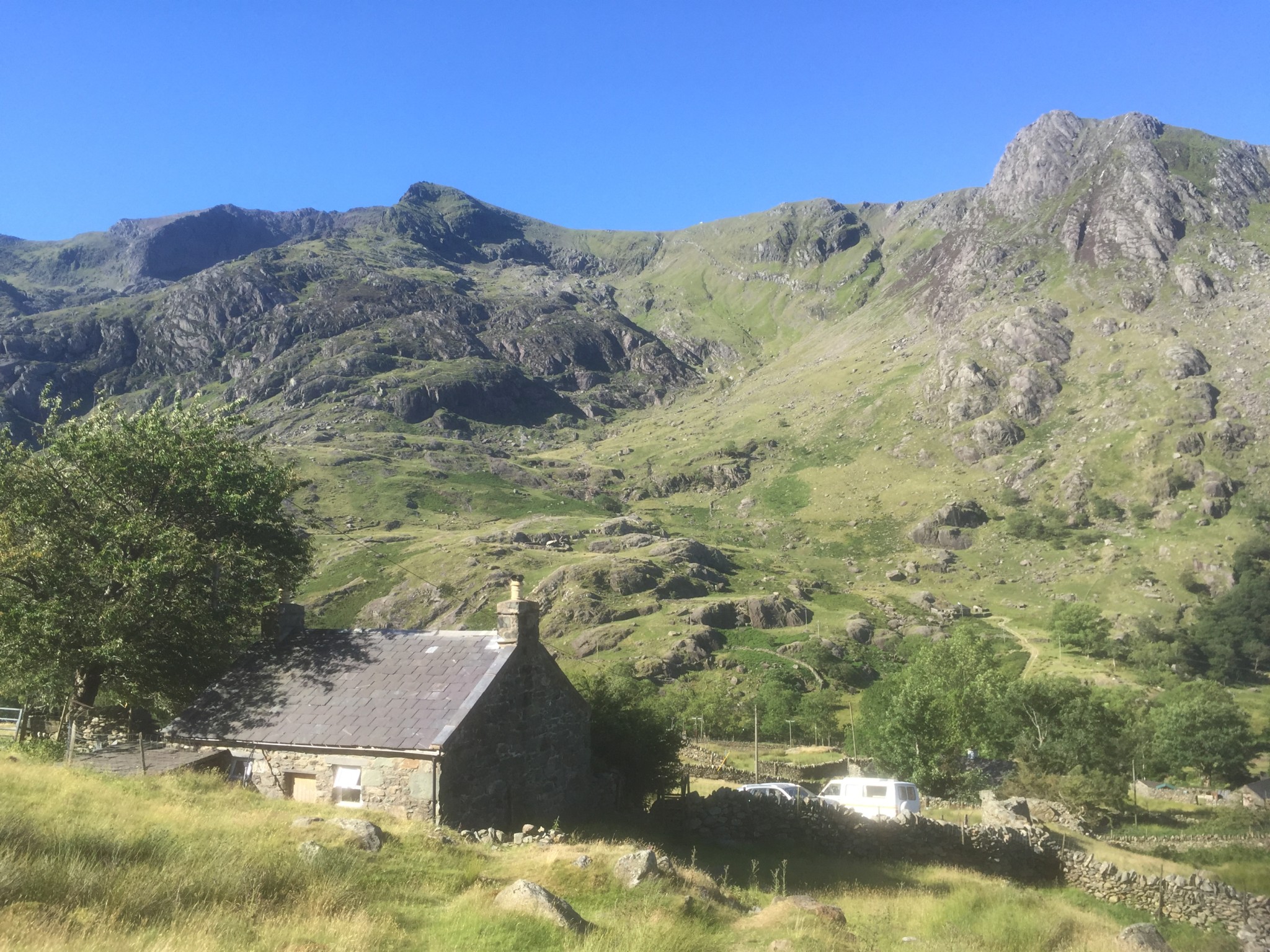When I look back, I cringe at how naive and arrogant I was when we first started out. How confident, self-assured and tunnel-visioned I was. I thought I had all the answers and arrogantly wondered why others weren’t doing the same. Well this summer has been a wake-up call, and a much needed one at that, although like most wake-up calls it wasn’t something I appreciated at the time, but now with a little distance I can appreciate it’s necessity.
In a world that increasingly craves and creates certainty, even where it does not exist, I’m having to learn to embrace confusion, less confidence, and less certainty.
NOTE: This was written over a month ago at the end of August. Life here has progressed already since then, more of which in the next update.
It’s not any solace, but I think this naivety and arrogance pervades the world of permaculture, regen ag, and alternative agriculture in general. It’s a belief there must be a better way of doing things than how everyone else is doing it. That they must all be wrong, and that we have the solution. A naive utopianism that can meet a rough awakening from the nitty-gritty of the real world. That’s not to say by any means that aren’t plenty of good ideas coming out of these movements – it just means that not everything, everyone says is necessarily correct or applicable. The hard thing at first is working out what might be useful, and what might even be detrimental.
Ideas are ten a penny, as they say, but how often can they be followed up with action? How many of these ideas can be made to work financially in a business where margins are tight?
This is why I now seek to learn from those with empirical experience, rather than theoretical knowledge. Discernment seems to be an essential life skill.
It’s different when your livelihood depends upon it and you’re under pressure to make a business work. There’s plenty talking a good game, but how many are actually playing one? How many are talking up their game?
It’s one thing creating a demonstration site to show how you could make money, and how it could be scaled up, it’s another actually scaling it up. Richard Perkins makes some very good points in a recent Youtube video about this problem with the permaculture movement. Growing veggies in your backyard and scaling up to a market garden are two different things, and just because the theory fits, doesn’t mean the practice does. Ditto other areas of farming. The truth we’ve learnt is that you spend a lot of money building a farm up, to maybe just about scrape a living. Financially we’re fortunate enough to be able to pursue that, and of course we haven’t gone into it to make money. We’ve gone into it to make meaning for ourselves.
We are now into our third year of farming, and in many ways it’s our year of graduation. We’ve spent the first two years learning, practising, and gathering feedback, so it’s now time for us to put all we’ve learnt into action and finally bring it all together. Not that we’ll actually know what we’re doing by the end of our third year either, but next year will be a year of reckoning for us. By the end of next year we must have a profitable farm business or I don’t see how we can continue with it as a full time occupation. We’ve glimpsed the promised land of profitability a few times in the last year but next year it must be sustained. Graduation is not a foregone conclusion.
But before getting into some of the changes we’re about to make, what has led us to re-examine our assumptions and nudged us towards changing path?
Like it is for most, it took crisis to strike for us to change approach. As I wrote in my last post, we hit burn-out in the month of June. Burn-out doesn’t sound as bad as it should. Being in a state of burn out is like being in a cold room without the lights on for two months. It’s a lonely place without energy. You’re too tired to care, too tired to give, and even too tired to receive. It sucks the enjoyment out of everything. As one friend put it about his own circumstance, ‘I’d become a vessel for hard work and nothing else.’ It’s exhaustion on a scale that’s hard to fully express. It’s a state where things you loved, wither and die. A place of despair and destruction. It takes a long time to fall into and then, hopefully, recover from.

At the beginning of July we went away for a few days together for the first time since we started farming two years ago. Our friend Jacqui milked the cows, and Sam’s parents looked after the house and dogs, whilst we were away. It allowed Sam and I the chance to go to North Wales for our first wedding anniversary. We stayed in a hand-built stone cottage halfway up the mountains, with Snowdon literally looming over us. That feeling on the first morning of waking up, without an alarm, and being able to have a lazy brunch, sitting outside in the presence of giants, is impossible to put into words. I sighed a large relief.
We enjoyed our few days, but come our final evening I felt an unstoppable, crushing feeling of almost claustrophobic fear, because I knew that the day after we’d be returning to the farm. To its stresses and worries and the incessant demands placed upon us by our animals and our business. I felt like I was returning to a prison. It weighed down on my chest as I lay awake that night trying to sleep. I didn’t want to leave, I cried to Sam. I wanted to stay within the majesty and freedom of the Welsh highlands.
The break was an important but all-too-brief respite from the realities and responsibilities of running a small farm. It laid bare my fragility. We’d been ploughing ahead for 2 years, trying to get the farm into a financially viable position, ignoring along the way the demands of our health and wellbeing. Our body and mind cares little for our goals.
In truth, we’d both hit a pretty desperate place but at least the healing and recovery had started. I’ve come to learn that the struggle of farming is the struggle to balance the competing forces of the farm and the rest of our life. We farm willingly, and gladly, none of this is to cry ‘poor me’, it’s just we’ve learnt you also have to keep a life outside of the farm. To spend time on our own, with each other, with friends and family. But all of that of course is tempered by the terrible twins of time and energy. Though isn’t that one of the eternal struggles of humanity?
The month of July, ahead of us at that point, was one where we’d need to face the challenges of another heifer calving and the dreaded TB test, so getting back to the farm, as the song goes, was getting back to reality.
We planned to keep July as free from extra work as possible, so that we could take some time to rest and recuperate. We went down the beach, we swam in the sea, we slept a few other nights off the farm, and importantly we spent much time reflecting and re-considering how to farm in the future. We even had that conversation of, ‘should we quit?’
It was important to leave all options on the table. Asking that question made me sad to consider quitting farming. I really, really want to make it work. I love doing it, most of the time. But neither of us are prepared to risk our health, or our relationship, so if push came to shove, and we had to choose we’d stop farming. But I don’t think that needs to be the case, we just need to find a better way of doing it going forwards.
This summer has given us the opportunity to consider that. We’ve looked at what we can streamline, what can be delegated, and what isn’t working and needs change. Out of that we are planning to make some fairly major changes, which I’d love to talk about, but I’ve decided to wait as I’d rather talk about what we did, than what we’re going to do.
So as I sit here writing this, we’ve not milked for four weeks, which has been a very welcome respite, and we’re about to re-do our dairy parlour, for what will be version 3.0, in preparation for a few new milking cows that will be arriving from Cornwall next month. We stumbled across a fantastic small family dairy farm that are super passionate, knowledgeable and compassionate about cows and dairying. I was quite humbled by their dedication to their animals, and the sheer level of expertise they had balanced with a real love of the cow. A truly inspiring family that have only been doing it for seven years and started off with nothing.
We came into micro-dairying from the perspective of how to milk a few cows for ourselves. It was all very experimental at first, and we had no definite idea that we would end up pursuing it as a full-time business. We learnt a lot, and it got us on our way, but we’re now looking at it all the other way around, and trying to learn what we can from the conventional world of dairying, and seeing what we can scale-down and apply to our own scale.
Aside from the continuous changes we’re implementing. We’re looking forward to a new era on the farm this autumn as two of our best friends will be cultivating mushrooms and producing tempeh here in one of the barns. They also plan to grow plenty of fruit and veg. Our hope, as we grow the farm, is to provide space for others to do their thing, to provide for a mixed, diverse, inter-connected farm producing a wide range of products.
What else has been going on? Well we couldn’t get through this update without mentioning the weather and the drought of 2018. For us it’s been very interesting, and that’s because we haven’t really suffered it that badly, but I know for most farmers across the UK it’s caused, and will cause for quite some time, some real challenges.
The cold winter meant we came into spring with little growth, and it went from cold April to dry May, meaning for the first 4–6 weeks of grazing we were only just about managing to feed all our animals. It didn’t help that it had just coincided with us buying quite a few new cows — we started the year with about a dozen, and currently have about 40 including some calves. Thankfully, we were able to secure 14 acres of grazing from a neighbour, along with being able to cut 10 acres of hay on friends’ land. But even with that, we were struggling. At the end of June I realised without some rain in July, we were going to more or less run out of grazing by the end of August.
It’s tricky because on the one hand you’ve got to ‘prepare for the unexpected’ like this, but on the other, we’ve got to maximise our return from each acre in order to survive financially. It’s a fine line, and one every farm has to balance.
Six weeks without rain from the end of April until the middle of June. Then another six weeks without rain, until the end of July – by which point we starting to feed hay in the field – and then thankfully it rained and rained and rained until the end of August. Of course we’re now fed up of the rain already! A farmer, I’ve learnt, is never happy with the weather!

Whilst of course we enjoyed catching a tan, going down the beach and swimming in the sea — the perks of living on one of the worlds’ most magnificent coastlines — the reality for many farmers is this will be a summer that pushes them over the financial edge.
Several weeks without rain might be normal in many areas — but when you’re not used to it, you stock your land accordingly, meaning you can usually keep more animals per acre in this part of the world than you might others. Dairy farms around here rely upon three good cuts of silage to meet their winter needs. But because of the lack of growth, many farms have eaten their first cut, and with a poor crop for the second cut, means there is a lot resting on this third crop. Hay prices have gone up accordingly — already double last year. I’ve read of farms in drier parts of the country booking their whole herds in for slaughter as they hadn’t any grass to feed them. I’ve also heard of silage being shipped from Scotland to South Wales. Desperate times for many.
Perhaps now I can mention the unmentionable. Climate change. Whether this summer is caused by it or not is irrelvant, and impossible to prove conclusively. But that this is the way of the future seems likely. According to a climate scientist I heard on BBC News, these types of droughts were once 1 in a 1000, now they’re 1 in 10.
Wildfires have engulfed the globe, from the UK, to the arctic, to Japan to Canada. Large swathes of the southern hemisphere is suffering a drought despite it being winter there. This will all have serious implications for food supply and food prices. Isn’t it time we started to properly prepare for climate change? We’ve all lulled ourselves into a collective state of complacency by expecting someone else to fix it or to prevent it for us. Well it’s almost too late for that, as climate change has now begun, and whilst there’s still much we can do to mitigate the worst — the worst being the total annihilation of everything on the planet — there’s much we need to do to prepare and adapt to climate change.
Locally-speaking it’s been interesting to see how many farms’ water supplies dried up. Springs that had not, within memory of locals, gone dry before dried up mid June, and even now with all the rain of July and August are still well below average flow. Water is essential to a livestock farm.
All in all it was a summer of challenge and change for us — some of it at the farm level, but most of it at the personal level — as if those could be separated. We are the farm, and the farm is us. It’s all encompassing.
We’re now trying to implement what we’ve learned, and make the necessary changes to make our farm financially and personally sustainable. Hopefully next year we’ll make the grade, otherwise we’ll have just been another pair of dreamers talking a big game, but not following through. We’ve grown through the greenness of naivety we started with, and now with our hands muckier, our backs a bit stiffer, we try again with our heads bowed with a little more humility, and a better sense of what it takes to make it work. But, at least for us, what greater pursuit can there be than farming?




